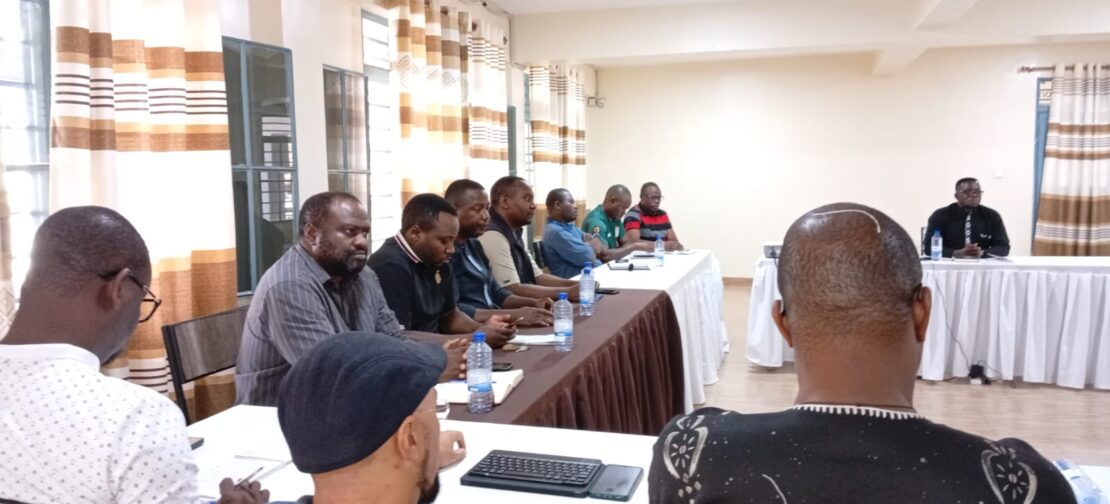
Testimony to the Missionary Fathers of Africa by A. TWIZEYUMUREMYI Donatien
Dear Fathers,
I stand before you today with humility and gratitude to share an experience that is both painful and yet full of hope: that of the Catholic Church in Rwanda after the genocide of 1994.
In barely one hundred days, our country endured one of the greatest tragedies of modern history. More than one million lives were taken, entire families wiped out, and profound wounds inflicted upon the social and spiritual fabric of the nation. Saint John Paul II described this tragedy as a “defeat for humanity.” Yet, in the light of the Gospel, we know that evil never has the last word: “The light shines in the darkness, and the darkness has not overcome it” (Jn 1:5).
The Genocide: A Wound Also Inflicted upon God
The genocide was not only a crime against humanity; it was also an offense against God, for every human life is sacred, created in His image. Pope Francis reminds us in Dilexit nos: “To offend man is also to wound the Heart of God who loved us first” (n. 12).
The Church in Rwanda was not spared. Many priests, religious, and lay faithful gave themselves to protect the innocent. Some even gave their lives, becoming witnesses of charity to the very end. Yet, we must acknowledge with truth that some members of the Church failed—through fear, silence, or even complicity. As the Episcopal Conference of Rwanda declared in 2000: “We have sinned and we ask for forgiveness.” This public act of contrition was an essential step in reopening the path of truth and reconciliation.
A Church Called to Repair and Heal
After 1994, the Church felt called to a particular mission: to offer reparation to God and to participate in the healing of hearts. This mission has been deeply rooted in the spirituality of the Sacred Heart of Jesus. Christ, whose Heart was pierced, has become for us a source of consolation and peace. As Dilexit nos says: “The Heart of Jesus is the place where our sin meets infinite mercy” (n. 24).
Concretely, this mission has been expressed through several initiatives:
Reparatory adoration and liturgies of remembrance (first Saturday of May),
The creation of spiritual centers and prayer communities (Ibanga ry’amahoro at Cyangugu, Kabuga Merciful Centre, Ruhango at Kabgayi, Jali in Kigali, etc),
The establishment of spaces for dialogue and reconciliation (Amatsinda y’ubumwe n’ubwiyunge),
And above all, a significant pastoral journey: isanamitima, iremamiryango, ubwiyunge, ubudaheranwa.
The Pastoral Itinerary: isanamitima, iremamiryango, ubwiyunge, ubudaheranwa
The Archdiocese of Kigali has promoted a pastoral itinerary structured around four essential pillars:
Isanamitima: healing of wounded hearts (Is 61:1),
Iremamiryango: rebuilding families and communities,
Ubwiyunge: reconciliation rooted in truth and forgiveness (Col 3:13),
Ubudaheranwa: resilience and the recovery of dignity.
This journey embraces genocide survivors, former prisoners (perpetrators), the families of offenders, and the younger generations. All are called to be accompanied, for as Pope Francis teaches in Fratelli tutti: “No one can face life in isolation… We need a community that supports us” (n. 8).
The Healing Journey Inspired by the “Paschal Path”
Born after the year 2000, notably through the Community of Emmanuel, the Paschal Path has become a pedagogy of healing and reconciliation, lived in parishes, religious communities, and families. It rests on the conviction that the Cross of Christ is the compass where our wounds meet God’s victory.
This path follows the stages of the Paschal Triduum:
Looking at the history of the country: contemplating both its gifts (unity of language, culture, faith) and its sins (divisions, hatred, genocide). This helps embrace the truth and opens the way to reconciliation. Saint Paul reminds us: “There is no longer Jew or Greek… for you are all one in Christ Jesus” (Gal 3:28).
Re-reading one’s own life in the light of the Cross: entrusting one’s wounds and sins to Christ. Many faithful symbolically placed their sufferings at the foot of the Cross, discovering that Jesus carried their pain: “Come to me, all you who labor and are burdened, and I will give you rest” (Mt 11:28).
Welcoming consolation and working through mourning: placing the names of the deceased and wounds into the open Heart of Christ. This gesture transforms pain into hope: “Your dead shall live; their corpses shall rise” (Is 26:19).
Discovering forgiveness: the summit of the journey. Inspired by Christ’s words, “Father, forgive them; for they know not what they do” (Lk 23:34), survivors have forgiven perpetrators, and former genocidaires have asked forgiveness. Forgiveness does not erase the past, but it frees and opens a future.
Reconciliation: the Paschal fruit. In communities, victims and perpetrators began to pray together again, to collaborate, and to support one another. Genuine fraternity was born where hatred and division once prevailed.
Challenges and Hope
Of course, challenges remain: deep traumas, unhealed wounds, the temptation of revisionism, and the transmission of pain to younger generations. Yet we remain confident, for “where sin increased, grace abounded all the more” (Rom 5:20; Dilexit nos, n. 30).
The Catholic Church in Rwanda, despite its weaknesses, seeks to be a prophetic sign: to show that the mercy of Christ can heal even the deepest wounds, and that the Cross remains the place of universal reconciliation.
Conclusion: The Testimony of Rwanda
Dear Fathers, the experience of Rwanda teaches us a fundamental truth: even after the horror of genocide, rebirth is possible. The Heart of Jesus, pierced by our sins, is stronger than hatred.
As Pope Francis writes in Dilexit nos: “To repair is to love anew, where love has been betrayed” (n. 35).
May each of us, according to our missionary vocation, be bearers of this reparation, this forgiveness, and this hope for the world.